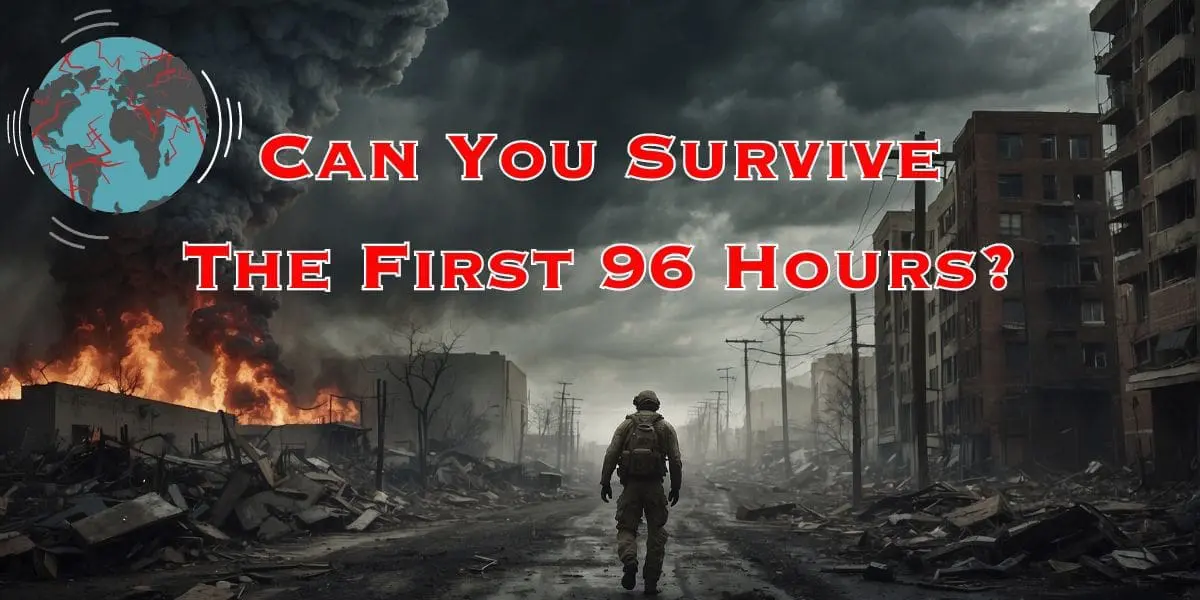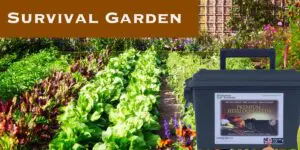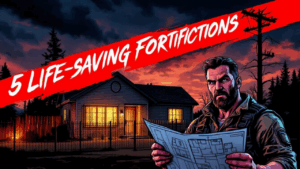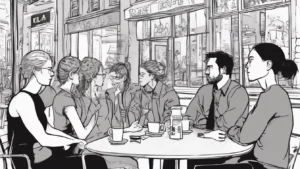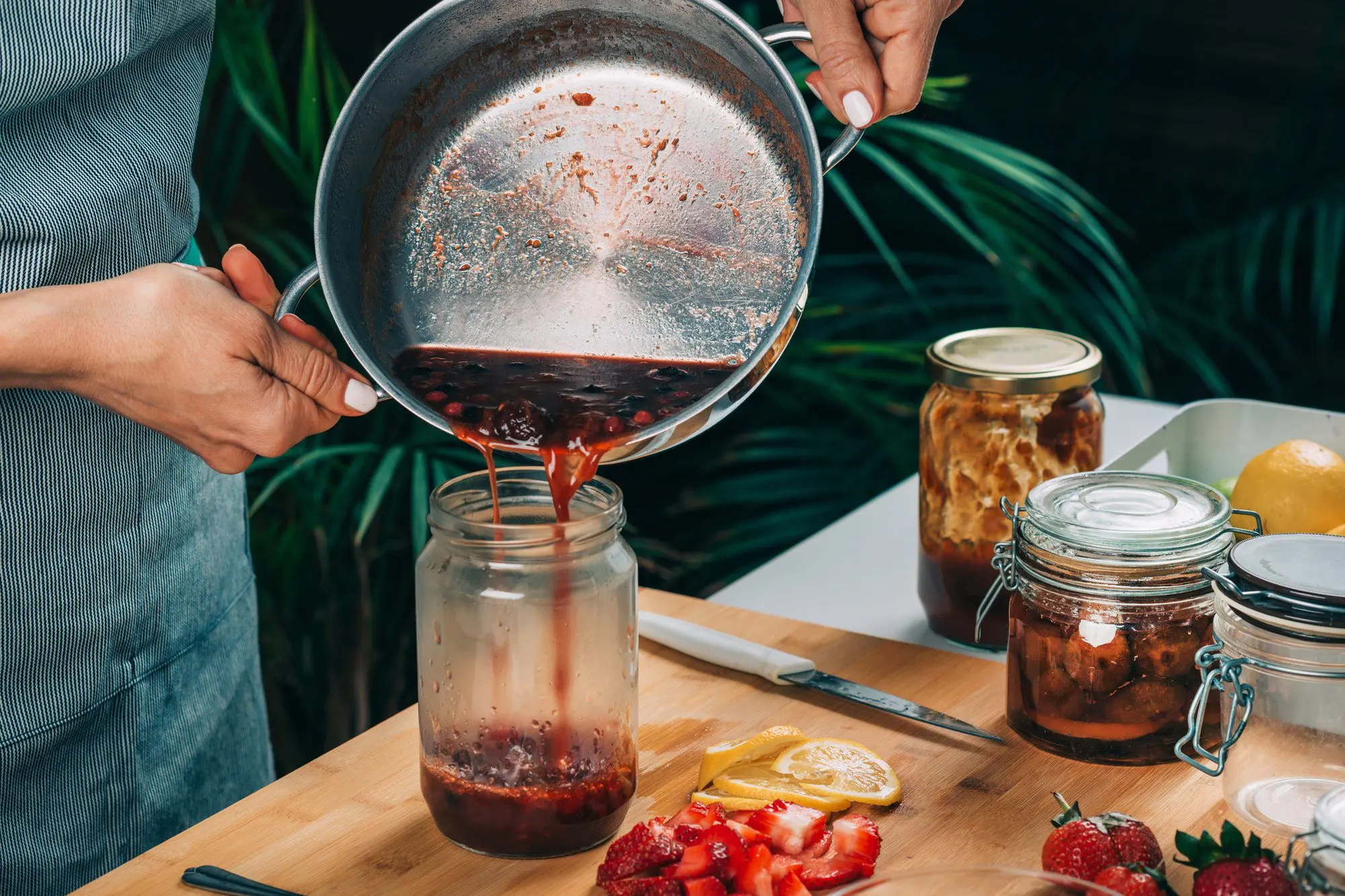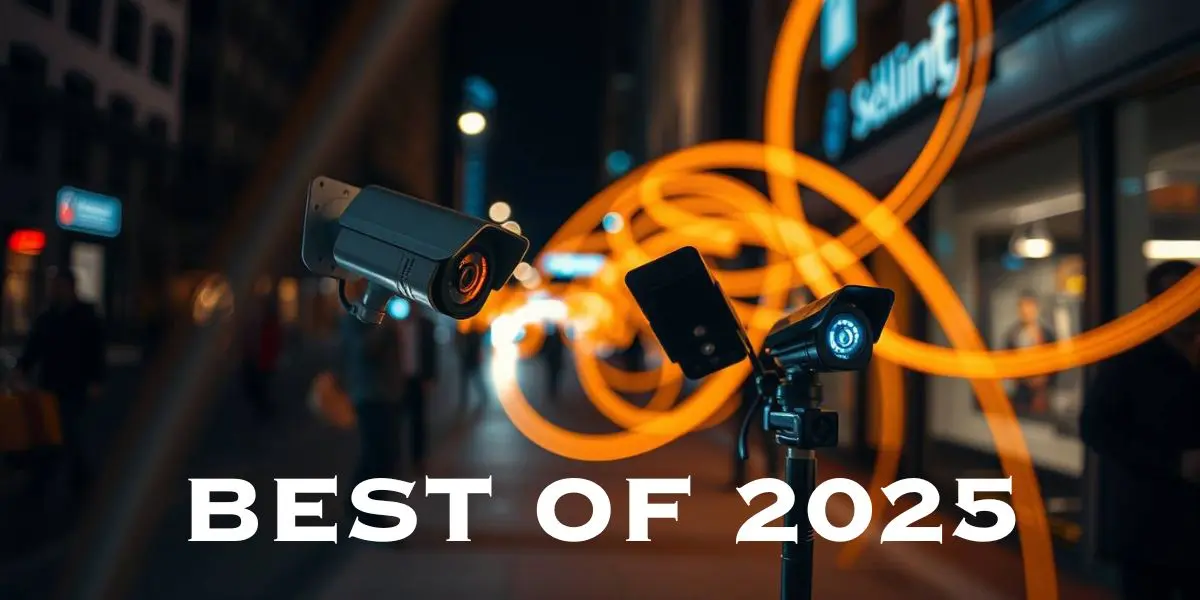Evacuating during certain catastrophic events is not favorable. In many cases, it would be safest for you to hunker down and stay at home. Staying home during disasters, invasions, and pandemics is crucial for keeping yourself and your loved ones safe. By avoiding unnecessary risks, you can ensure your safety and well-being during these challenging times. It’s important to prioritize your health and security when faced with such threatening situations.
While bug out situations are all fairly similar, staying at home for survival can vary greatly depending on the type of environment you live in. Urban areas, suburban areas, and rural areas will all require different game plans and will all face very different challenges.
A post-apocalyptic thriller of the after effects in the United States after a terrifying terrorist attack using electromagnetic pulse weapons.
Each one of these locations face their own inherent challenges, but these can further differ depending on the nature of the survival situation. For example, you may want to communicate with your neighbors in an urban setting during a natural disaster, but not during a viral outbreak.
By having a cohesive plan for the first 96 hours of a survival situation, you’ll decrease the chances of you panicking and making a bad decision. A dedicated plan keeps you on the right track and helps ensure that you do what you need to in order to keep you and your loved ones safe.

Urban Living Involves Unique Challenges
Living in a city means dealing with crowded surroundings and limited space. Apartments offer minimal storage compared to spacious houses, and within your complex, you’ll have numerous neighbors.
On the very first day, your top priority should be to effectively secure your home. Ensure that windows are adequately covered and doors are securely locked to thwart any potential intruders who might attempt to break in and scavenge for supplies.
In a densely populated urban area, the presence of other people increases the potential risk factors. When faced with a SHTF scenario, individuals may resort to perilous actions to obtain essential supplies, such as breaking and entering, theft, and even violence.
After securing your home, you need to carefully evaluate the situation and the nature of the SHTF event. There are various factors that can contribute to such a situation, and the particular details can alter certain variables – such as the extent of your interactions with others and the specific supplies that will be indispensable.
For example, a virus outbreak would mean that you’d want to limit your interaction with others as much as possible. In an urban area, this would be difficult to do, but not impossible.

In other situations, such as a foreign invasion, maintaining close communication with your neighbors becomes crucial, making self-defense supplies especially significant.
By the end of the first day, it’s important to ensure that your home is well defended and that you have gathered enough information about the emergency situation. It’s also crucial to remember to rest, as the stress and exhaustion can take a toll on your well-being.
Beginning on the second day, it is important to shift your attention to learning how to ration supplies. Even if you have managed to maintain a good stock of provisions, urban living spaces often have limited storage, making it unlikely that you will have a large amount of food available.
Ensure that you have freeze-dried food on hand, and if not, prioritize consuming perishable items such as meat and dairy before turning to longer-lasting foods.

If you find yourself restricted in space, you might want to consider purchasing a bucket of freeze-dried meals. These meals are exceptionally compact, taking up minimal room. With just one bucket, you’ll have enough food to last a single person an entire month.
They have a bit more of a diverse nutrient profile, which will be better for you than snacking on random shelf-stable foods. Figure out how much food you have and how long it’s going to last you.
Prepare yourself for an upcoming risky expedition to gather additional supplies. Create a detailed plan and assess the number of days worth of food you have left.
By day three, the initial panic will have subsided as the situation becomes more stable. The first two days are the most critical, with heightened panic and risks due to the mass movement of people.
This is dangerous because the more people there are, the higher the chances are of you running into someone who’s unstable or willing to forcibly take your own supplies. This might be a good chance to move around a bit and try to gather up some supplies.
It’s important to acknowledge that the initial panic can lead to scarcity of supplies, but it’s also true that there will likely be leftover items once the situation stabilizes. Engaging in the initial rush for supplies can indeed pose significant risks due to potential conflicts and chaos. Therefore, it’s crucial to plan and prepare wisely to avoid unnecessary dangers.
Now that the initial panic has subsided, you can conveniently visit any nearby market and easily purchase additional food, even if it may not be your preferred choice of meals.
This will likely be a regular occurrence for you, since you probably lack adequate space to store everything you need. The fourth day depends greatly on the nature of the SHTF situation.
If it’s okay to contact others, you should try to get a plan together with your neighbors to watch one another’s backs and help each other out. You might be able to do things like share supplies and create a network for the sake of safety.
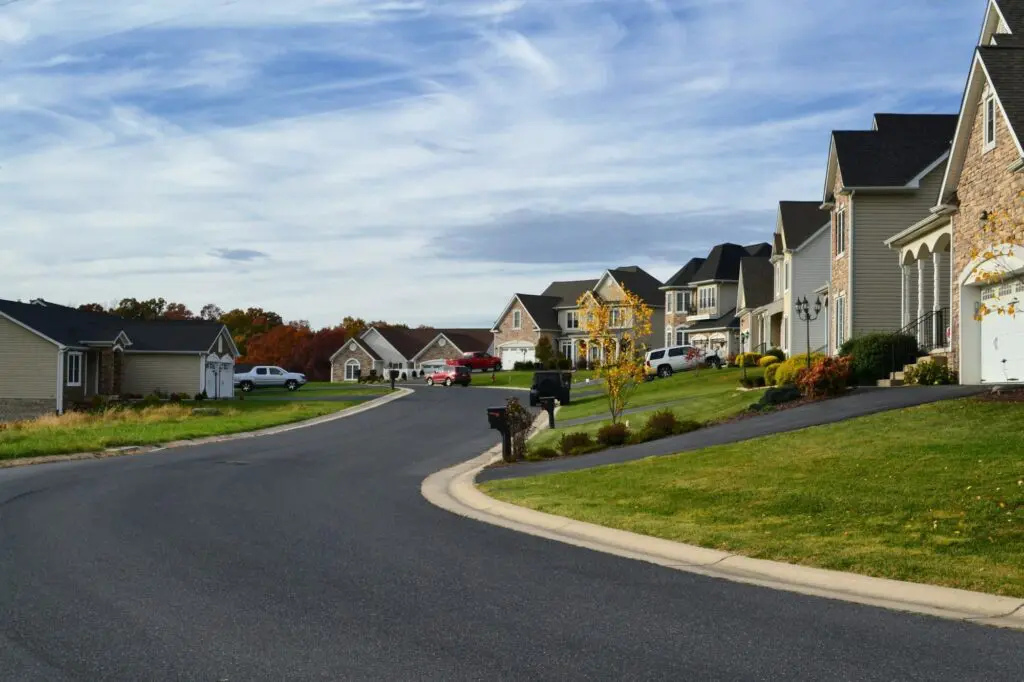
Suburban Families Will Have Different Tools at Their Disposal
There are several notable benefits to living in suburban homes compared to urban ones. Primarily, they offer significantly more space both within the houses themselves and on the surrounding properties. Additionally, they provide convenient access to an extensive range of natural surroundings, allowing for a richer and more diverse outdoor experience.
Suburban areas, although not entirely rural, are frequently situated near wooded areas or forests. This proximity, coupled with the possibility of cultivating crops in one’s backyard, presents a plethora of opportunities for obtaining food – a vital aspect in a stay-at-home survival scenario.
Handheld Ham Radios (VHF & UHF) with High Gain Antenna and Programming Cable (2Pack) (M)
The beginning of a SHTF scenario in a suburban area is perilous, just as it would be in an urban setting. The proximity of numerous neighbors brings the potential for panic and hostile reactions.
Nevertheless, the probability of such a situation occurring greatly varies depending on the neighborhood and your rapport with the neighbors, potentially being less likely in a rural environment. While it may not be imperative to barricade yourself immediately, it is crucial to remain vigilant and prepared to take such measures if the need arises.
This would be a good time to start taking advantage of the natural resources you have around you, if you haven’t begun to do so already. Ideally, long before a SHTF situation, you would have things like fruit trees and a vegetable garden already growing, because they can take a long time to get going.
If you haven’t already, now is the perfect moment to begin. Maximize the potential of your backyard by cultivating locally adapted fruits and vegetables. In the event of a prolonged SHTF scenario, they will become your essential source of nourishment, allowing you to minimize your excursions away from the safety of your property.
If you haven’t already, it’s advisable to reach out to your friendly neighbors on the second day, provided the situation permits. Ensuring their well-being and safety is crucial, and building a dependable network of mutual support is essential.
Consider forming a neighborhood watch to enhance safety and ensure the well-being of everyone. When people unite to support and protect each other, it becomes much harder for troublemakers to disrupt the harmony or engage in hostile activities like scavenging for supplies.
Attempting to navigate the challenges alone may yield some results, but enlisting the help of others will undoubtedly lead to a more seamless journey. Throughout history, humans have naturally gravitated towards forming communities and civilizations, recognizing the inherent difficulty of solitary survival.
Over time, you may be able to work together to do greater things, like start a proper communal garden that can feed multiple families, or repair damage from natural disasters that may occur.
You can achieve these things by yourself, but it will require a significant amount of time and energy. Working alone will also prolong the overall time needed to complete tasks, as there is only one person working on any given project. Collaborating is a more efficient way to make everyone’s life a little bit easier.
By the third day, it’s crucial to establish communication with the outside world once the initial panic has subsided. Utilizing a radio is the safest method to do so without exposing yourself to any potential risks.
In an emergency situation, electronics may not be reliable, but a crank radio can still pick up emergency broadcast signals, providing crucial information for survival. Look for a repeating message that can offer important details about the situation and how to stay safe.
This tool will provide you with real-time updates on the current situation. While a resolution may be achieved within a few days or a week, the process could also span over years. In addition, HAM radios can be utilized to establish communication with other survivors, who may possess valuable information.
General Radiotelephone Operator License Test - The Easy Way: Elements 1 & 3 (EasyWayHamBooks)
Without radios, relying on word of mouth becomes crucial for staying informed. Friendly strangers passing through the neighborhood may provide valuable updates on important news and events.
Utilizing streams for water, foraging for edible plants in woodlands, and hunting or fishing in nearby forests can help sustain you during this critical time. Additionally, it is important to ration and prioritize the remaining supplies to ensure they last until more sustainable sources can be secured.
Although you might have a substantial supply of food and water, it is important to recognize that it will not last indefinitely. Therefore, it’s crucial to conserve these resources for when they are absolutely necessary. This is particularly true for water, as it occupies a significant amount of space and is consumed rapidly.
Water is essential for various purposes such as cleaning, drinking, and cooking, especially when it comes to dehydrated survival food. Make it a habit to venture out and collect water every day, ensuring that you also learn effective methods of purifying it. Whether you use chemical treatments, filtration systems, or boiling techniques, safeguarding the quality of your water is crucial.
Having stored purified water can truly be a lifesaver during a major drought or in dire situations when no other options are available. Likewise, having a stockpile of food becomes crucial, although its effectiveness largely depends on the quantity you possess.
Having a year’s worth of shelf-stable food for each family member allows you to avoid the need to go out and gather food for quite some time. However, if you only have a few days’ worth of food, it’s crucial to spend more time gathering outdoor resources to ensure you have a meal available when your supplies run low.

Rural Homes Have It Easier, But Still Face Specific Problems
Rural homes enjoy a clear advantage in terms of reduced risks from other individuals, owing to their isolation. Yet, should circumstances demand the presence of others for enhanced security, safeguarding oneself might pose a more intricate challenge.
Generally speaking, owning a sizable rural property is highly advantageous when it comes to securing a safe and self-sustaining lifestyle. The ability to cultivate and preserve food is significantly simpler, while proximity to a flowing stream or river ensures convenient access to a reliable water source.
The level of success you achieve during a stay-at-home SHTF situation on a rural property heavily relies on the amount of preparation you have undertaken beforehand. This is crucial, as many essential items will be challenging to construct from scratch if you don’t already possess them.
If you find yourself in the remote countryside, the initial day will probably be astonishingly tranquil. However, if you happen to be closer to the city, you may witness a slight increase in the flow of traffic around your vicinity due to people seeking refuge, despite the fact that it would be wise to remain in the safety of your own home.
On the first day, your top priority should be to ensure that all the preparations you made are functioning properly and in optimal condition. This is a critical moment to secure any necessary supplies for fixing any potential issues.
Ensure that your property is properly safeguarded by inspecting the condition of your fences. Make certain that all segments are in good repair and none are damaged. Additionally, it is advisable to assess the state of any outbuildings you own, as well as the condition of any equipment, such as farming machinery and rain collection systems.
If something is seriously broken and you don’t have the specific parts, go to a store that sells what you need. If it can be fixed with common materials, it’s safer to stay home and not take any risks.
On the second day, it’s crucial to stay alert for any individuals passing by. People who left the cities by car will likely be well ahead. However, those traveling on foot may just be reaching your area, and could view a rural home as a tempting
Living with your family presents an opportunity to enhance the security of your property. By implementing shifts throughout the day, each family member can take turns in monitoring different areas. This ensures that everyone gets sufficient rest while maintaining constant vigilance. In the event of a potential threat, immediate action can be taken as the entire household is alerted simultaneously.

Although it’s important to be cautious, it’s also crucial not to assume every passerby is there to harm you. They might genuinely need help or directions, but it’s wise to be aware of potential ulterior motives.
Always remain vigilant, prioritizing a defensive approach rather than an offensive one. By the third day, it is crucial to meticulously plan your strategy for securing food sources. If you have made optimal use of your land, you should ideally have a wide range of options at your disposal, including multiple water sources to choose from.
Consider livestock as a reliable source of food. Chickens can provide a steady supply of eggs, while cattle can be raised for milk and meat. Livestock offers a consistent and sustainable food option.
Your priority should be to maintain the health of your livestock to the best of your abilities. While you may not have access to a veterinarian, taking specific precautions can help you protect your livestock from predators.
The last thing you’d want is for a fox to infiltrate your chicken coop through an open spot. A fantastic food option, particularly for landowners, is to grow a variety of fruits and vegetables.
Owning a tractor can significantly simplify the process of plowing the land and ensure a bountiful harvest that will provide you with an ample food supply for the entire year. In addition, by allowing portions of your property to remain in a more natural state, you create a favorable habitat for various animals that can serve as a valuable source of sustenance.
In the past, people who relied on the land as a source of sustenance would often hunt and consume wildlife such as rabbits and deer, which can still be readily found in many woodland areas. By employing the appropriate methods, it is also possible to secure various sources of water for oneself.
LifeStraw Personal Water Filter for Hiking, Camping, Travel, and Emergency Preparedness
Purifying a stream or river is a good choice, but there are also alternative options available for water collection, such as a well, water tanks and the like, which can be essential for survival.
In a large collection tank, you have the capacity to store hundreds, if not thousands, of gallons. The primary purpose is to collect fresh rainwater and retain it for an extended period. This provides you with a sustainable water source that can be easily purified.
If fortunate, your property could offer viable locations for drilling wells. Utilizing the groundwater beneath the surface will grant you access to relatively clean water for an extended period. Although this endeavor may demand specific equipment to commence, adequate preparation can ensure its success.
By the fourth day, it is crucial that you establish contact with any trustworthy neighbors nearby. Rural properties are typically located at a significant distance from one another, meaning that your closest neighbor could be over a mile away from your location.
Both of you have access to supplies that the other needs, forming a highly symbiotic relationship. For instance, you have access to well water, which you can share, while your neighbor raises chickens that provide you with fresh eggs every morning.
Having a relationship like this can prove invaluable in situations where you lack essential resources during an emergency. Rather than taking unnecessary risks, such as searching for provisions in a chaotic city, you can rely on trusted neighbors to share basic supplies.
It’s important to remember that your initial 96 hours will depend not only on your location, but also on the current situation. During pandemics, it’s crucial to prioritize acquiring various supplies that focus on protection and health, rather than preparations for an electromagnetic pulse event, due to the contagious nature of the crisis, and vice versa.
No matter where you are or what the situation is, there are essential tasks that must be carried out. These include securing your home, assessing food and water supplies, devising a plan to acquire necessities, and maintaining communication with those who can assist in an emergency.
Having a clear strategy in place and identifying reliable sources of information will greatly contribute to your preparedness efforts. Additionally, it is important to regularly review and update your emergency plan to ensure it remains relevant and effective in the face of evolving circumstances.

